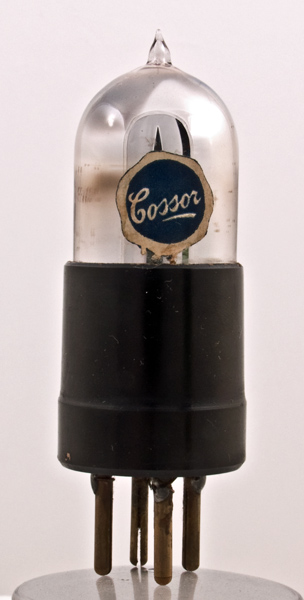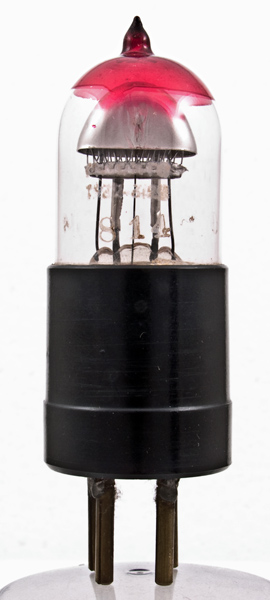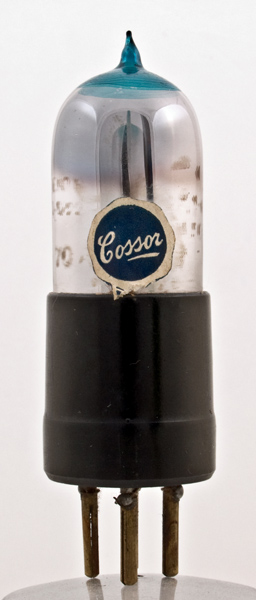|
  
From left to right: W1, W2 and W3
Late in 1923, the Cossor company announced its Wuncell range of valves but were probably difficult to make as the actual valves appeared in 1924. The Wuncell in the name indicating that they operated from a single 2 Volt accumulator. These valves used primitive oxide-coated filaments; these were the first valves of this type to be designed and manufactured in Britain after World War One. Initially there were three types: W1, W2 and W3, but a further three types were announced in November 1924. These were WR1, WR2 and WR3. The actual launch of the type W3 was delayed until mid-1925 and the type WR3 never went into production.
The two WR valves had an 8 Ω resistor incorporated in the moulded base, formed by a coil of resistance wire, and connected in series with the filament, enabling it to be operated from 2V, 4V or 6V accumulators. The WR types have a screw terminal close to a filament pin with two insertion holes. If the terminal is screwed into the hole directly adjacent to the filament pin, the resistor is shorted out and the filament must be connected to a 2 Volt accumulator. If the screw is positioned in the second (dummy) hole, the filament may be operated from either a 4V or a 6V accumulator. These filament ratings were moulded on the underside of the base. According to Cossor:–
The WR Wuncell is a boon to the user of a multi-valve set who wishes to change over to dull emitter valves by degrees as his existing valves have to be replaced. In such a case, therefore, when all the bright emitter valves have been replaced with Wuncells the resistance within their bases should be short-circuited, and the accumulator converted to 2 Volts.
W1 and WR1 are medium-impedance valves and intended to be direct replacements for the type P1.
W2 and WR2 are high-impedance valves and intended to be direct replacements for the type P2.
W3 is a low impedance output valve.
The valves have a similar outward appearance to the later P1 and P2 and are of a similar size. All except the W3 have the same type of arched filament (although strengthened by adding a centre support), and hood-shaped grids and anodes. The W3, however, has a helmet-shaped anode similar to the P3.
In practice the oxide-coated filaments proved to be unreliable, a clue to the change in the later 1920s to all valves and adverts proclaiming 'New Process' when Cossor adopted a different filament coating method.
See also 1924: Hints on Using Dull Emitter Valves.
|